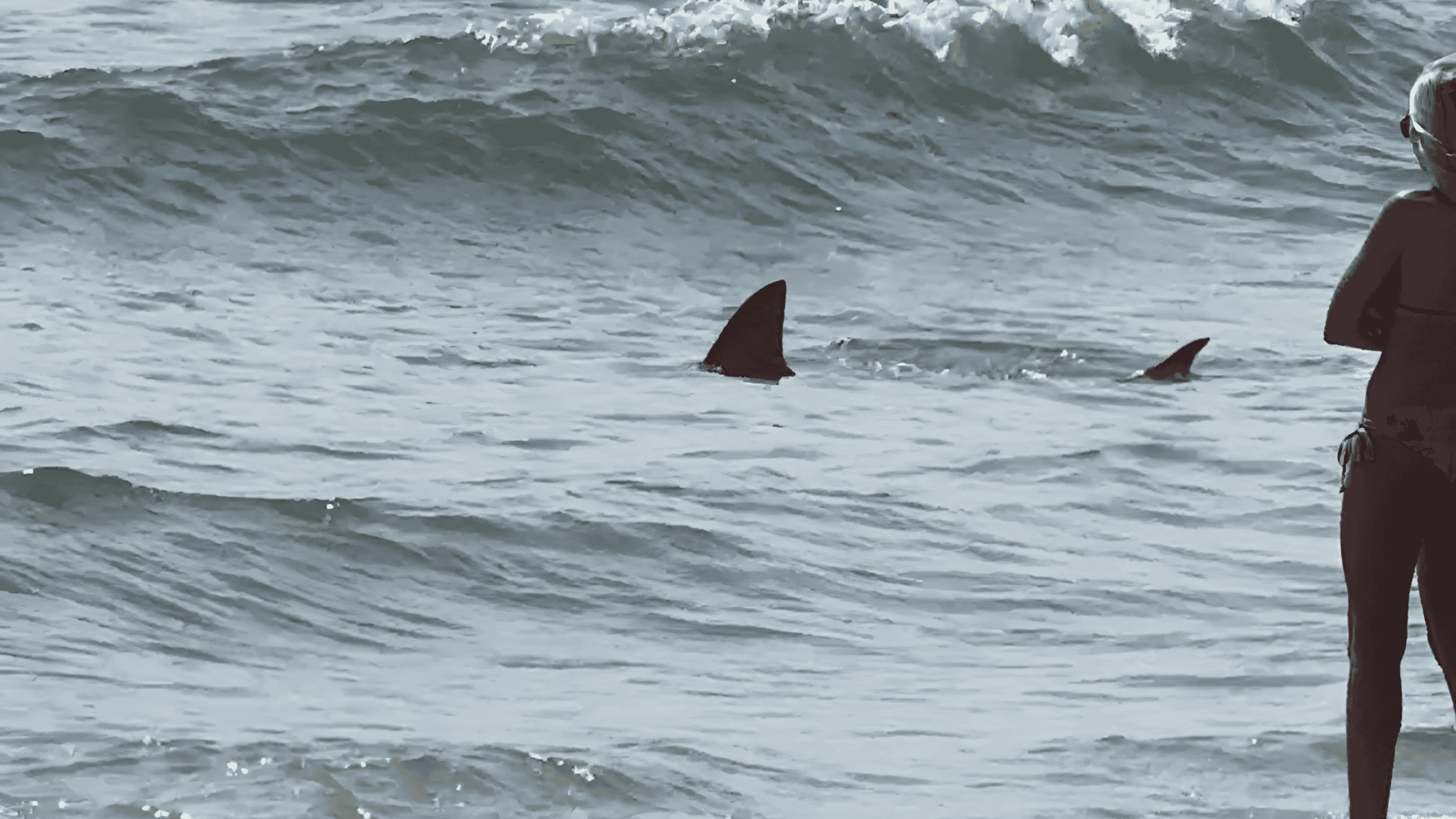Sharks Seen Off The Coast of Cape May
This week, shark sightings along Cape May have raised many questions: do sharks usually live near our beaches, and what kinds do we see?
The shark spotted was about 5 feet long and was pushed up along the shore after getting caught in some waves.

Sharks Seen Off The Coast of Cape May
Cape May Point lifeguards quickly got everyone out of the water to ensure safety. After 30 minutes, the shark wasn’t seen again and folks were allowed back into the water.
Sharks are drawn to New Jersey waters for several reasons, including an abundance of prey, suitable breeding grounds, and favorable migratory routes.
The coastal environment provides a rich and diverse habitat that supports various life stages of these fascinating creatures.

This abundance of food supports their populations and attracts them to these areas, especially during the warmer months when prey species are most active.
Breeding and nursery grounds are another critical factor. The shallow coastal waters and estuaries of New Jersey provide ideal conditions for shark pupping and juvenile development. Sandbar sharks, for example, use these areas as nurseries where the young can grow in relative safety from larger predators.

Migration patterns also play a significant role in the presence of sharks in New Jersey. Many species, such as the dusky shark and thresher shark, migrate along the eastern seaboard, traveling between tropical and temperate waters. New Jersey’s coastal waters serve as a crucial stopover point during these migrations.
The changing water temperatures and seasonal movements of prey drive these migrations, with sharks following their food sources and seeking optimal conditions for survival and reproduction.

Also see: How Hurricane Debby Could Affect New Jersey
They primarily feed on small fish and invertebrates and are generally not considered dangerous to humans. Another frequent visitor is the smooth dogfish (Mustelus canis). These smaller sharks, rarely exceeding five feet in length, are known for their smooth skin and slender bodies. Smooth dogfish are often caught by recreational anglers and are commonly found near the shoreline, where they hunt for crabs, shrimp, and small fish.
The dusky shark (Carcharhinus obscurus) is a larger species occasionally spotted off the coast of New Jersey. These sharks can grow up to 14 feet and are distinguished by their sleek, dusky-colored bodies.
Dusky sharks prefer deeper waters but sometimes venture closer to shore, especially during their migratory periods.They are known for their long-distance migrations, often traveling between tropical and temperate waters.

Great White Shark Tracked Off The Coast of Wildwood
The great white shark (Carcharodon carcharias), perhaps the most famous shark species, is also occasionally sighted off the New Jersey coast. These apex predators are renowned for their size and power, with some individuals reaching lengths of up to 20 feet.
While great white sharks are relatively rare in these waters, their presence is always noteworthy and draws significant attention from both researchers and the public. Recently, a great white shark was spotted within 30 miles of Wildwood, a significant distance away but still notable.
These sharks, along with others, contribute to the rich biodiversity of New Jersey’s marine environment.
Ultimately, you must swim near a lifeguard to ensure that you will be safe. Those lifeguards do an amazing job of that.
